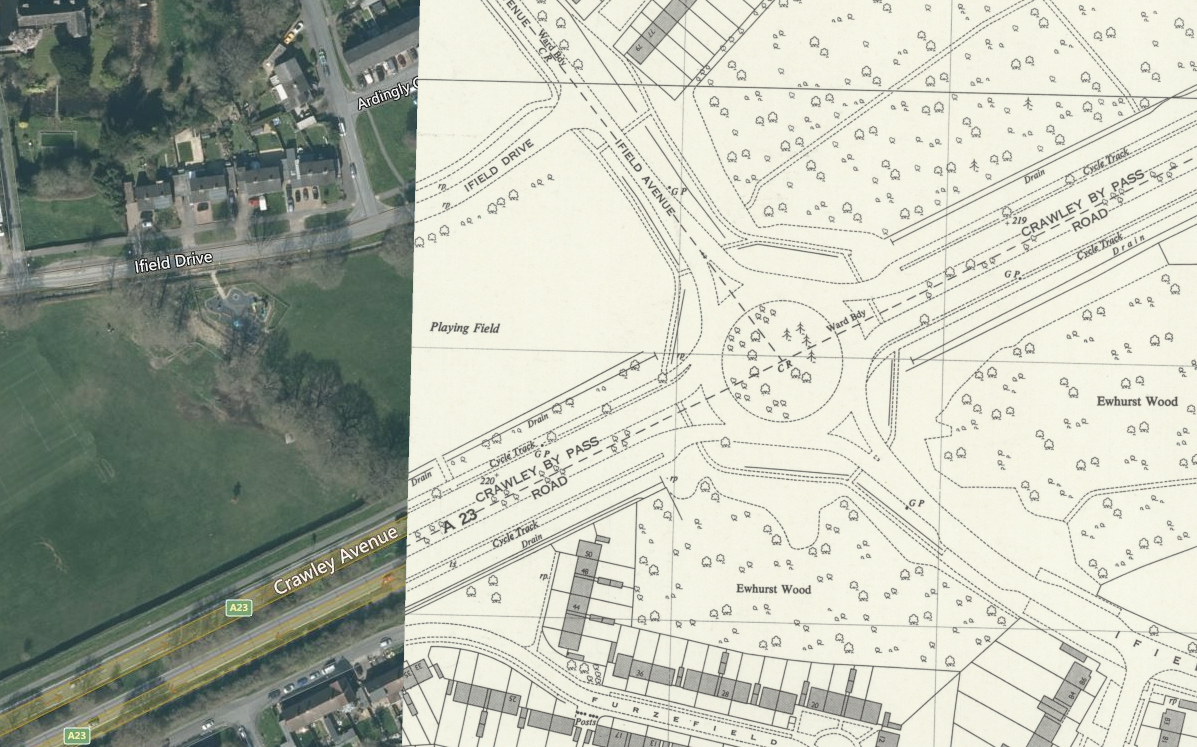
Crawley bypass — and cycle tracks — under construction, 1938. Credit: West Sussex Archives.
A 38-second Gaumont British News clip broadcast in 1939 showed the “amazing” Crawley bypass which, the chipper announcer said, will result in “two and a half miles of happier motoring.”
The new road, named Crawley Avenue, was opened “at exactly 8 o’clock, on Sunday [9 July 1939] when workmen removed the barriers that guarded the entrances to … the immense arc of concrete that will carry millions of cars, and spare motorists the irritation and delay of the ill-famed crossing gates that have earned for the town the nick-name ‘Creepy Crawley,’” stated a local newspaper report.
The opening, continued the reporter, was “an event that will have a far-reaching effect on the future life of Crawley,” but it was “effected without fuss or ceremony, witnessed by a mere handful motorists and cyclists, who waited at the Tushmore entrance to have the distinction of being the first to use this most modern road in Britain.”
The road, said the reporter, “is a dual carriageway 120 feet in width, flanked by a cycle path and a footpath on each side and with a strip of land dividing the tracks.”
The cycle tracks were “each 9ft. wide, and two footpaths each 6ft. wide,” stated the Cambridge Daily News.

Period OS map of the Crawley Bypass meshing with Google Maps aerial image of today’s Crawley Avenue.
Describing the bypass to come, the West Sussex County Times in 1937 reported that “commencing at the junction of the London-Brighton-road (A23), approximately 100 yards south of Tushmore-lane, the new road traverses across country in a south westerly direction … and terminates at a point approximately 30 yards south of the entrance to Broadfield Farm.”
Transport minister Captain Euan Wallace visited the road a month before it opened, claiming it “may serve as a model for the scheme of trunk road improvements” elsewhere in the country, reported The Scotsman.

Period OS map of what is today the Southgate roundabout on the Crawley bypass.
The newspaper also stated that the Crawley bypass had a “pedestrian subway.” This is not the subways and shared use paths beneath the Southgate roundabout. This scheme was built in 1972.
During WWII, the Crawley bypass was used for storing military equipment. “Tanks and Bren gun carriers were lined up along it,” ATS (Auxiliary Territorial Service) Corporal Joan Whittingham told the BBC’s People’s War archive. (She was also posted to Dorking and Gateshead’s Team Valley so would have seen the cycle tracks on the Mickleham bypass and on the Team Valley trading estate.)





